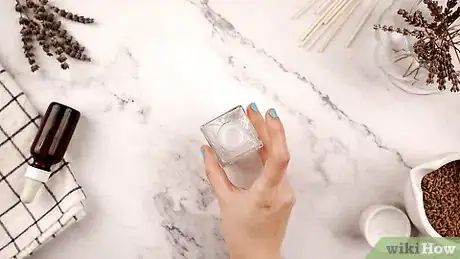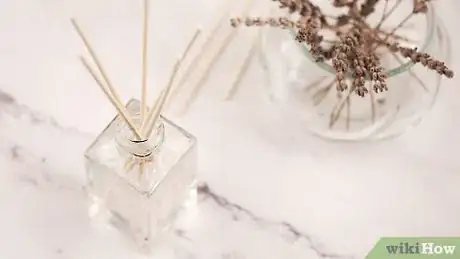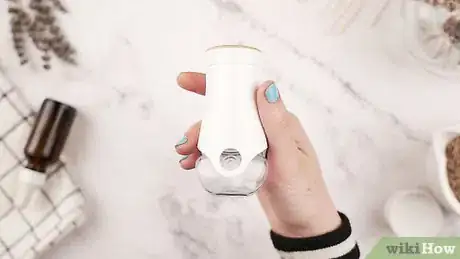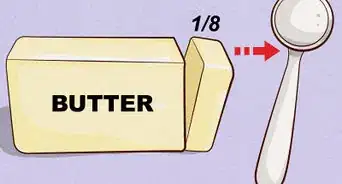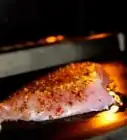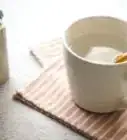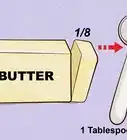This article was co-authored by Ritu Thakur, MA. Ritu Thakur is a healthcare consultant in Delhi, India, with over 10 years of experience in Ayurveda, Naturopathy, Yoga, and Holistic Care. She received her Bachelor Degree in Medicine (BAMS) in 2009 from BU University, Bhopal followed by her Master's in Health Care in 2011 from Apollo Institute of Health Care Management, Hyderabad.
wikiHow marks an article as reader-approved once it receives enough positive feedback. In this case, 86% of readers who voted found the article helpful, earning it our reader-approved status.
This article has been viewed 69,548 times.
Diffusers, both the reed kind and the kind that you plug into your wall, are very popular. Not only can they make your home or office smell lovely, but they can also add a touch of decor. Unfortunately, the diffuser oil does not last forever, and it can get expensive. If you ran out of diffuser oil and can't afford more, why not make your own? It will be a lot cheaper in the long run, and you'll be able to create your own custom blends.
Steps
Making a Blend for Reed Diffusers
-
1Choose a light, carrier oil to use as your base. You can use just about any type of lightweight oil, such as coconut oil, safflower oil, or sweet almond oil.[1] Avoid using solid coconut oil, and other heavy oils, such as extra virgin olive oil and jojoba oil; they will take too long to travel up the diffuser.[2]
- Grapeseed oil is another great option.[3]
- This method is intended for reed-based diffusers. Do not use it for plug-in diffusers.
-
2Pour ¼ cup (60 milliliters) of your carrier oil into a glass bottle. Stick a funnel into the neck of the bottle first, so that you don't spill and waste any oil.Advertisement
-
3Add 20 to 30 drops of your favorite essential oil. Lavender, lemon, mint, tea tree, and vanilla are all popular individual choices, but you can combine different oils to create a more unique fragrance. Here are some combinations to get you started:[4]
- Bergamot and patchouli
- Cinnamon and wild orange
- Lavender and eucalyptus
- Lavender, lemon, and rosemary
- White fir and cypress
-
4
-
5Close the bottle, and shake it to mix. This will help the different oils (and rubbing alcohol, if you are using it) to blend together instead of just floating on top of each other.
-
6Use the diffuser oil. If your bottle has a narrow neck, you can simply insert some bamboo skewers into it. You can also pour it into your reed diffuser bottle, but make sure that it is clean and all traces of the previous fragrance have been washed out.
- When inserting reeds into the bottle, make sure that they are new. Do not reuse old reeds.
- Be sure to secure the lid on your diffuser oil when you're not using it. This way, it won't evaporate.[9]
Making a Blend for Plug-In Diffusers
-
1Find an empty, plug-in diffuser. This method is intended for those small diffusers that you plug into your wall. They are about the same size as nightlights and have a small glass jar or bulb attached to the bottom.
-
2Unscrew the glass bulb from the body of the diffuser. In most cases, you will need to twist the bulb counterclockwise.
-
3Use a butter knife or flat screwdriver to pop the cap and wick out. Slide your tool under the cap, and press down on the handle. This will help pop the cap out.
- Some wicks may have a nail inserted through them. In this case, you may need to use a pair of needle-nose pliers to pry it out.
-
4Rinse the bottle out and let it dry so that the scents don't mix. It might also be a good idea to rinse the wick out as well (be sure to squeeze it to get any residual oil out) and let it dry as well. Be aware that some wicks have a sharp nail poked through them.
-
5Add 20 drops of essential oil into the diffuser.[10] Cinnamon, lavender, lemon, orange, and vanilla are all popular choices, but you can also use other types as well. You can even combine different oils to create your own unique scent.
- Some of the oil scent will remain. When adding a new scent, consider using something that is similar to the old one. This will ensure that you don't end up with something that smells unpleasant.
-
6Fill the diffuser with water, but leave some space at the top. You need that extra space for the wick. If you are using a bulb-shaped diffuser, then fill it to just below the widest point.
-
7Put the cap back on. If you took the wick out of the cap, then put it back in first. Try to pop the cap straight down, applying even pressure. Wiggling it back and forth will not be as effective.
-
8Twist the bulb back into the body of your diffuser, and give the diffuser a good shake. This will blend the oil and water together. Don't worry if your mixture looks cloudy; this is normal, because you are using essential oils.
-
9Plug the diffuser into the wall. The fragrance will be more subtle than the store bought fragrance because you are using natural, essential oils. It will take only a fraction of the cost to make, however!
Expert Q&A
-
QuestionWhat is a diffuser oil used for?
 Ritu Thakur, MARitu Thakur is a healthcare consultant in Delhi, India, with over 10 years of experience in Ayurveda, Naturopathy, Yoga, and Holistic Care. She received her Bachelor Degree in Medicine (BAMS) in 2009 from BU University, Bhopal followed by her Master's in Health Care in 2011 from Apollo Institute of Health Care Management, Hyderabad.
Ritu Thakur, MARitu Thakur is a healthcare consultant in Delhi, India, with over 10 years of experience in Ayurveda, Naturopathy, Yoga, and Holistic Care. She received her Bachelor Degree in Medicine (BAMS) in 2009 from BU University, Bhopal followed by her Master's in Health Care in 2011 from Apollo Institute of Health Care Management, Hyderabad.
Natural Health Care Professional Diffuser oils can help your home smell clean and fresh without the use of possibly harmful chemicals.
Diffuser oils can help your home smell clean and fresh without the use of possibly harmful chemicals. -
QuestionWhat oils help with sinuses and allergies?
 Helpinghand4youCommunity AnswerEucalyptus oil and menthol oils are extremely good for unblocking the sinuses. Also, use peppermint, tea tree or lavender to help with your allergies. Do not put any oils inside your nostrils and do not ingest essential oils. Only ingest oils if told to by a doctor or if they are edible.
Helpinghand4youCommunity AnswerEucalyptus oil and menthol oils are extremely good for unblocking the sinuses. Also, use peppermint, tea tree or lavender to help with your allergies. Do not put any oils inside your nostrils and do not ingest essential oils. Only ingest oils if told to by a doctor or if they are edible.
Warnings
- Do not consume these oil blends.⧼thumbs_response⧽
- Homemade diffuser oils have a more subtle scent than store-bought ones. This is because you are using natural, essential oils instead of artificial fragrances.[11] [12]⧼thumbs_response⧽
- Tea tree oil is one of the more readily available essential oils, but it is not safe for cats. If you have a curious cat who likes to knock things over, you may want to avoid this oil.[13]⧼thumbs_response⧽
Things You'll Need
Making a Blend for Reed Diffusers
- ¼ cup (60 milliliters) light oil (ie: fractionated coconut oil, sweet almond oil, or safflower oil.)
- 20 to 30 drops essential oil(s)
- 1 teaspoon rubbing alcohol (optional)
- Funnel
- Glass bottle
Making a Blend for Plug-In Diffusers
- Water
- Essential oil
- Plug-In diffuser
- Butter knife or flat screwdriver
- Needle-nose pliers (optional)
References
- ↑ Ritu Thakur, MA. Natural Health Care Professional. Expert Interview. 13 December 2021.
- ↑ http://www.theprairiehomestead.com/2014/02/diy-essential-oil-reed-diffuser.html
- ↑ Ritu Thakur, MA. Natural Health Care Professional. Expert Interview. 13 December 2021.
- ↑ http://www.theprairiehomestead.com/2014/02/diy-essential-oil-reed-diffuser.html
- ↑ http://www.theprairiehomestead.com/2014/02/diy-essential-oil-reed-diffuser.html
- ↑ Ritu Thakur, MA. Natural Health Care Professional. Expert Interview. 13 December 2021.
- ↑ http://naturesnurtureblog.com/homemade-air-fresheners-reed-diffusers/
- ↑ https://www.apartmenttherapy.com/homemade-reed-diffusers-147411
- ↑ Ritu Thakur, MA. Natural Health Care Professional. Expert Interview. 13 December 2021.
- ↑ http://thekrazycouponlady.com/2011/11/15/save-money-by-making-your-own-scented-plug-ins/
- ↑ http://www.theprairiehomestead.com/2014/02/diy-essential-oil-reed-diffuser.html
- ↑ http://naturesnurtureblog.com/homemade-air-fresheners-reed-diffusers/
- ↑ http://www.petmd.com/blogs/thedailyvet/ken-tudor/2014/january/tea-tree-oil-safe-pets-31282
About This Article
To make diffuser oil for a reed diffuser, pour ¼ cup of a lightweight oil such as coconut oil or sweet almond oil into a glass bottle. Next, add 20 to 30 drops of your favorite essential oil, or combine different oils for a more unique fragrance. Then, add 1 teaspoon of rubbing alcohol to help draw the oil up through the reeds. Finally, cap the bottle and shake to mix. To learn how to make diffuser oil for a plug-in diffuser, read on.


